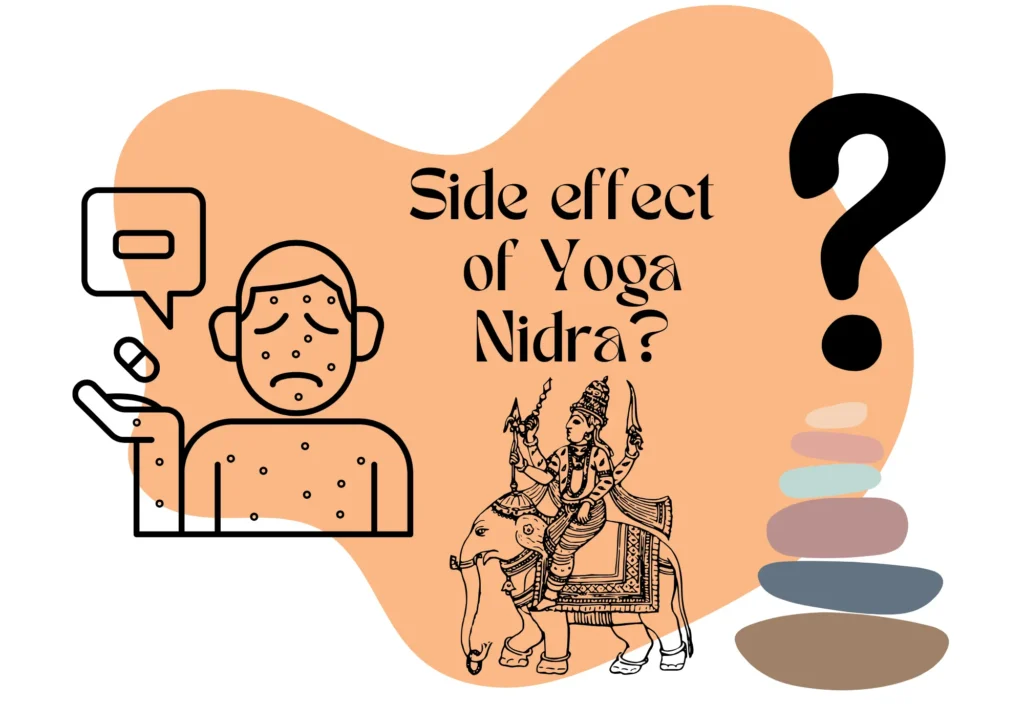Exploring the Side Effects of Yoga Nidra: What You Need to Know
We’ve all heard about the benefits of yoga nidra, but what about its potential drawbacks? I have previously covered is Yoga Nidra Dangerous and the answer to that is a big resounding NO.
Ofcoure there are few things to keep in mind. Since Yoga Nidra is a yogic practice, and helps you go in to a deep state, it can also uncover some past wounds and trauma.
PTSD or Schizophrenia patients should do Yoga Nidra under an experience practioner
Imagine someone who’s navigating complex mental health challenges like PTSD or schizophrenia. For them, the journey inward could stir up difficult emotions or even trigger unsettling experiences, like vivid hallucinations or delusions. It’s not because Yoga Nidra is bad—it’s just that everyone’s mind responds differently to this deep relaxation. So, if you or someone you know is dealing with these kinds of challenges, it’s really important to do this under supervision. Yoga Nidra is a powerful tool, but like any tool, it’s all about using it in a way that feels right for you.
Yoga Nidra for Specific Populations
Yoga nidra has shown promising effects on various groups, including pregnant women, adolescents, and the elderly. For pregnant women, it can strengthen the bond between mother and child, helping them remain calm during labor . Adolescents practicing yoga nidra have reported improvements in happiness, enthusiasm, and self-confidence 2. In the elderly, it has been found to reduce symptoms of depression and enhance overall well-being .
Yoga nidra’s impact on mental health extends to reducing cognitive and physiological symptoms of anxiety. Its effects on the brain include shifting brain wave states, promoting calmness and allowing individuals to stay present 3. This makes yoga nidra a good tool for stress management.
Precautions and Contraindications
Those with a history of severe trauma, including PTSD, should approach the practice with caution and consider working with a trauma-informed instructor. It’s crucial to practice yoga nidra in a quiet, disturbance-free environment, preferably on an empty stomach. We should avoid practicing while driving or operating machinery. Despite these precautions, yoga nidra remains a safe and accessible practice for most people, offering potential improvements in sleep quality and mental health. However, if we experience any discomfort or unusual symptoms during the practice, it’s best to stop and seek medical advice.
FAQs
Who should avoid practicing Yoga Nidra?
Yoga Nidra is generally beneficial for most, but individuals with certain mental health conditions might find it challenging as it involves deep introspection that could be uncomfortable for those who struggle with their thoughts. For others, it can significantly enhance sleep quality and mental health.
How does Yoga Nidra affect the brain?
Yoga Nidra helps the brain enter the alpha state, where serotonin is released, fostering a transformational experience of inner peace. This shift helps reduce mental fluctuations, leading to profound tranquility and relaxation.
What are the benefits of practicing Yoga Nidra daily?
Daily practice of Yoga Nidra can decrease stress, improve sleep quality, and potentially heal psychological wounds over time. It often instills a deep sense of joy and overall well-being.
Can practicing Yoga Nidra lead to anxiety?
Yoga Nidra typically helps in reducing anxiety by promoting a shift towards parasympathetic nervous system dominance, which is associated with high cardiac vagal control. This control contributes to decreased anxiety levels and better sleep quality, both subjectively and objectively.
References
[1] – https://mymeditatemate.com/blogs/meditation/i-did-yoga-nidra-every-day-for-2-weeks-heres-what-happened
[2] – https://www.ncbi.nlm.nih.gov/pmc/articles/PMC6134749/
[3] – https://www.ncbi.nlm.nih.gov/pmc/articles/PMC9033521/


